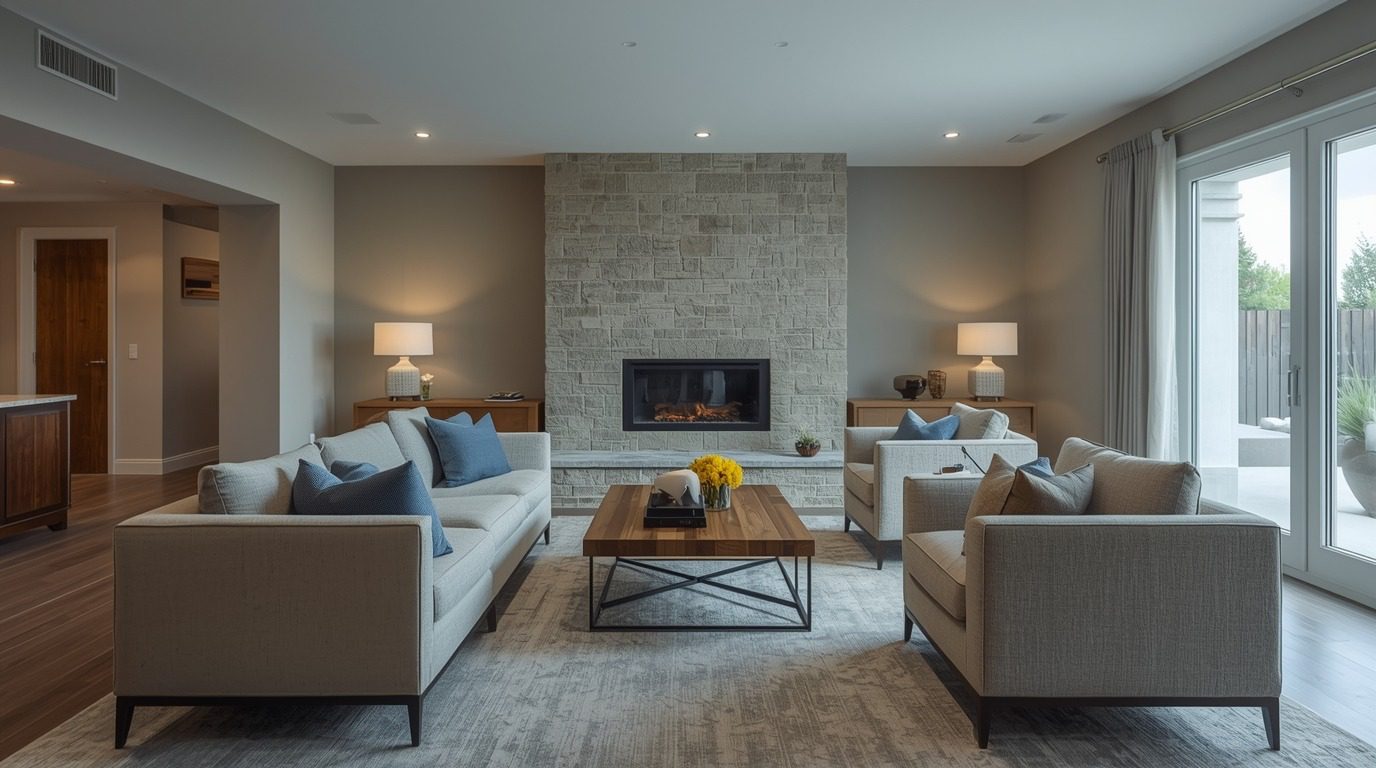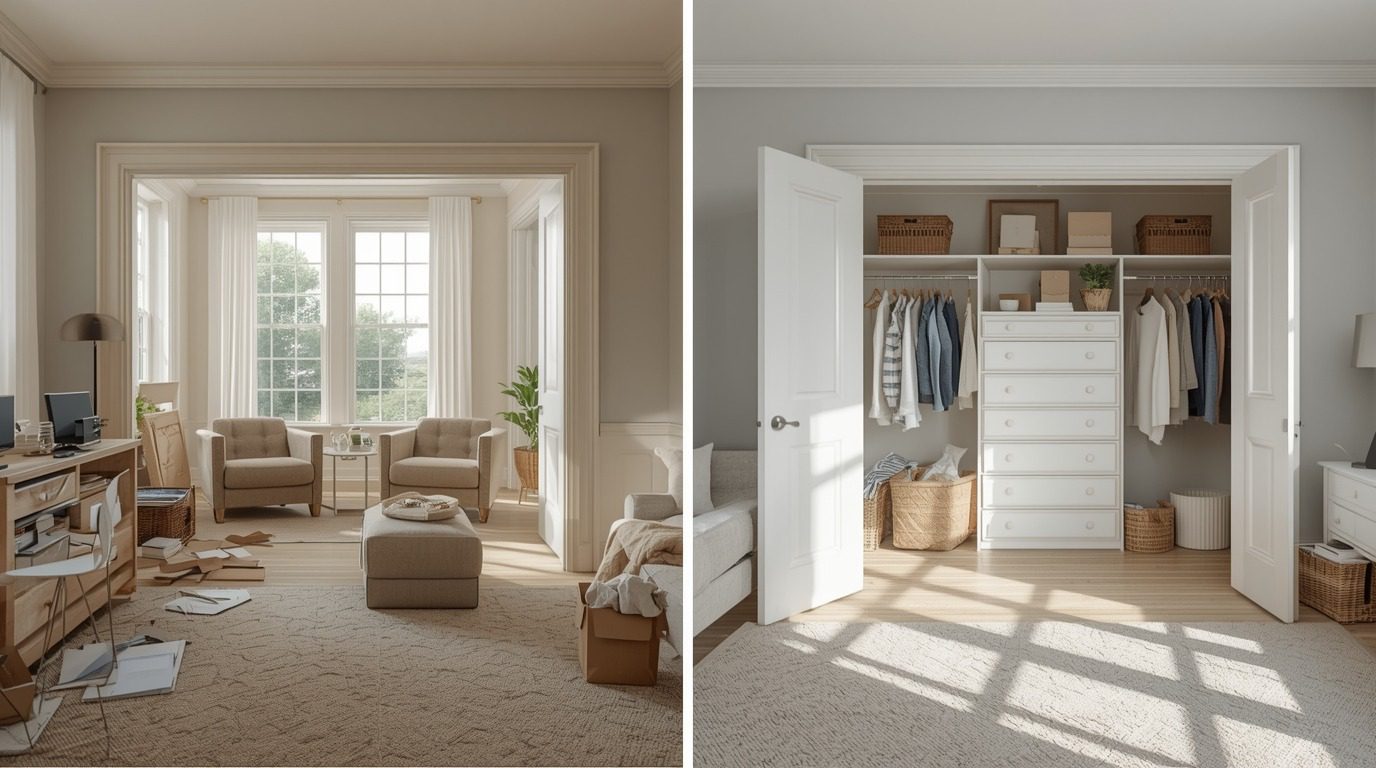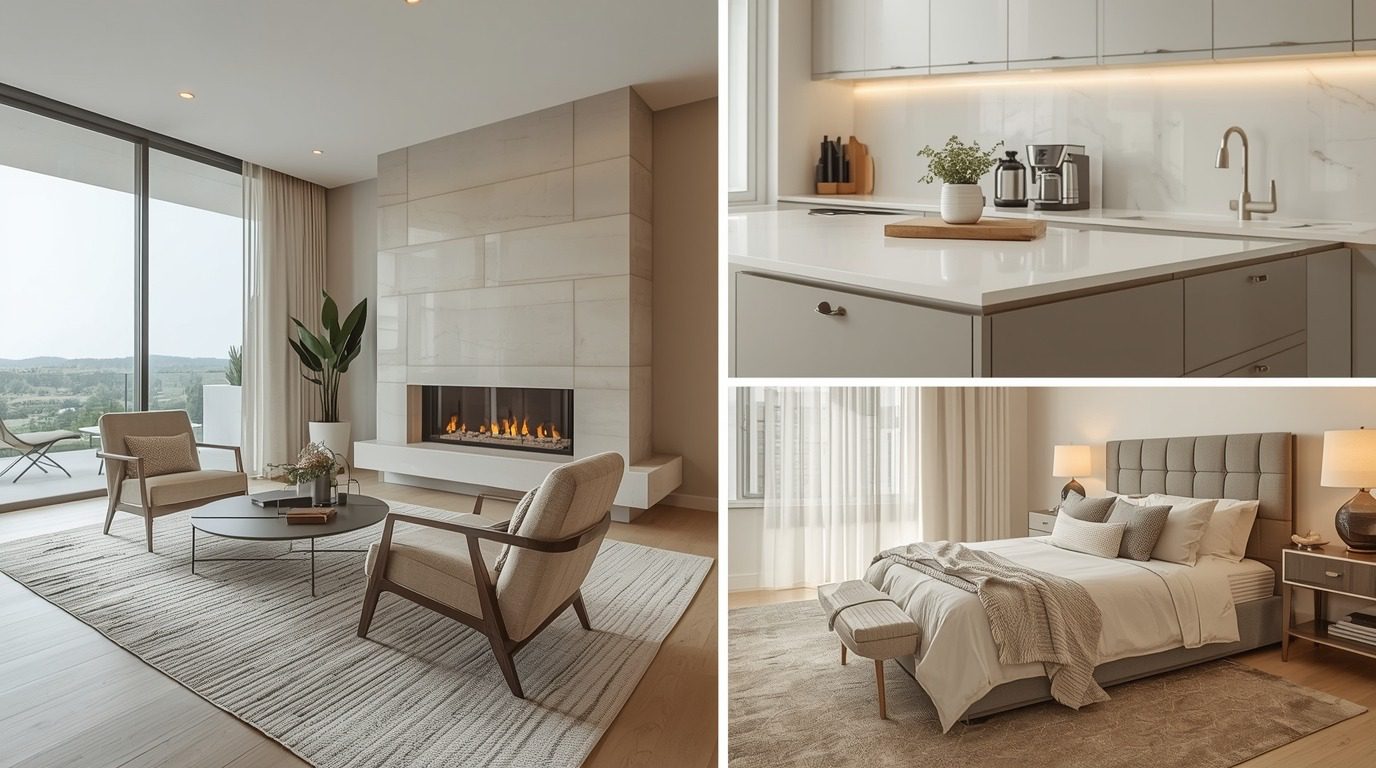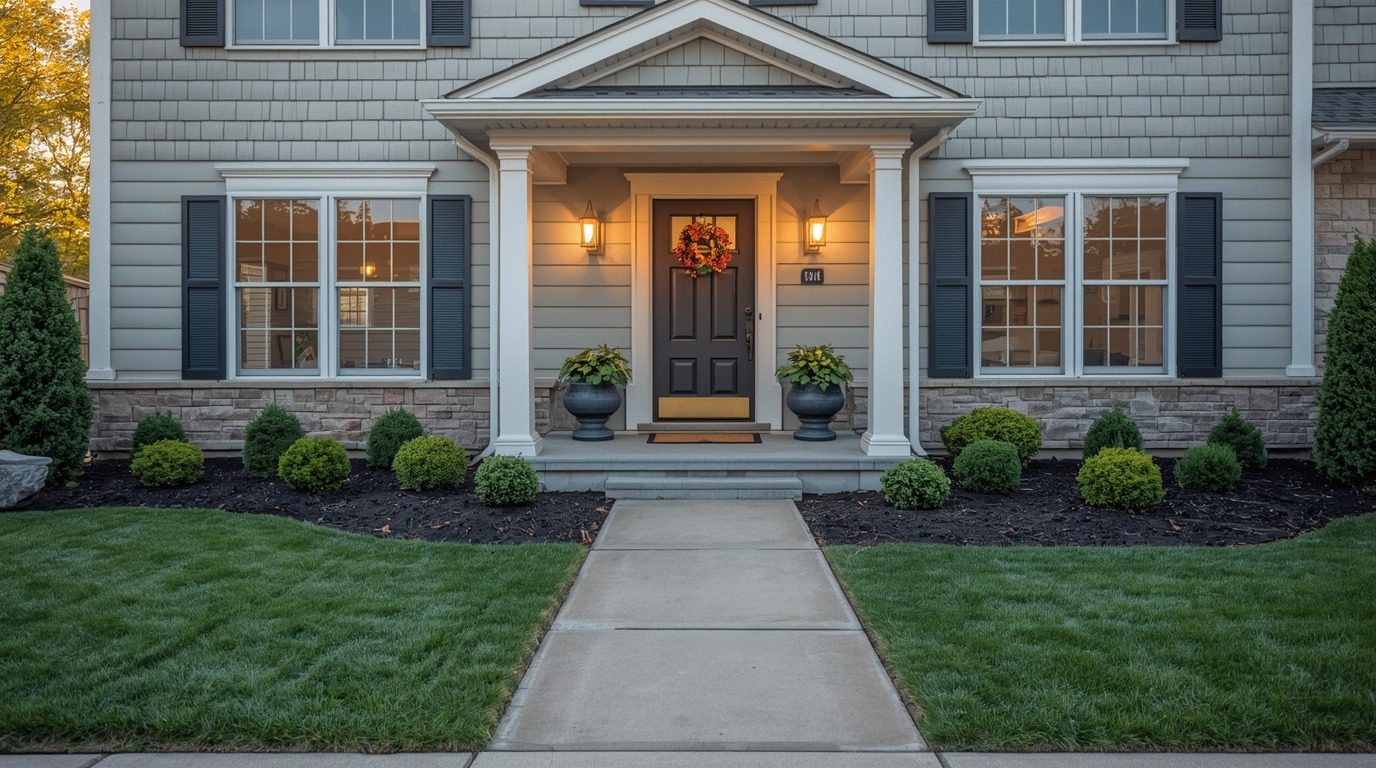Buyers don’t purchase square footage; they buy a feeling. Staging turns rooms into clear stories—how the light falls in the living room, where a morning coffee might live, why the primary bedroom feels restful. You’re not decorating for yourself. You’re editing for a stranger who wants to say, “This is it,” before they’ve finished the tour.

Why Staging Works (and What Buyers Notice First)
Staging helps buyers process space quickly. When a living room has an obvious conversation area, a focal point (a fireplace, built-ins, or a view), and balanced light, the brain stops hunting for clues and starts imagining routines. That shift—from analysis to emotion—is what nudges second showings and cleaner offers.

Real life adds logistics. Maybe you’re coordinating a move, juggling a rent-back, or sorting a tenant’s schedule. That’s where an operational layer matters as much as throw pillows: predictable showing windows, a plan for touch-ups, and fast make-ready between appointments. If you’re mapping out the sequencing and need local guidance on timelines, resources focused on selling your property can help you align access, notices, and quick fixes so the listing stays show-ready without fraying nerves.
Pre-Stage Triage: Subtract, Repair, and Make a Simple Plan

Start with subtraction, not shopping. Pull out duplicate chairs, thin bookcases, and clear surfaces so traffic paths feel intuitive. Closets should read spacious even when they aren’t; a half-full hanging rod telegraphs storage more convincingly than any listing caption. The goal isn’t minimalism for its own sake; it’s clarity about function and scale.
Next, fix the small things buyers quietly “price” in their heads: a sticky door, one flickering bulb, scuffed baseboards, a drippy faucet that requires an extra twist. If paint is tired, choose a mid-tone neutral to reset everything without flattening the room. Keep trim crisp so photos pop. Then write a one-page staging plan you’ll actually follow: declutter → repairs → paint touch-ups → lighting → photos. That order prevents a last-minute scramble and a soft launch.
Stage the Big Three: Living Room, Kitchen, and Primary Bedroom

Living room: Float the seating to define a clear conversation zone instead of lining everything against the walls. One properly sized rug (front legs of sofas and chairs on it) anchors scale. If a window view or fireplace is your “hero,” style that and let the rest defer—fewer small objects, more negative space. Your first indoor listing photo is often this room; it should carry the vibe for the rest.
Kitchen: Buyers judge function here, not just finishes. Clear counters down to two or three useful, attractive items (a coffee setup, a wooden board, a plant). Replace tired hardware; it photographs better than you’d think. If appliances don’t match, make them equally spotless so the eye stays on layout and storage. For a quick refresher on how work zones and lighting support performance, use this guide on creating a functional and stylish kitchen layout; the staging takeaway is the same: simplify sightlines and amplify utility.
Primary bedroom: Think boutique-hotel calm. A properly sized headboard, matching lamps, neutral bedding with one contrasting throw, and minimal furniture do more than an elaborate “look.” Lose heavy drapes that swallow light; aim for consistent, warm bulbs so the room reads restful rather than yellow or blue. When buyers feel relaxed just standing there, you’ve done it.
Light, Lens, and Timing: Make the Camera Your Ally
Lighting is the cheapest staging multiplier. Unify color temperature across fixtures (a warm “soft white” typically feels inviting both in person and on camera), add a couple of table lamps to soften overhead glare, and kill shadows in corners that make rooms feel tight. Mixing slightly different bulb colors is a small error that reads as fatigue in photos.
Photography deserves its own checklist. Hide cords, straighten blinds, align bedding, and remove anything that interrupts the lines of the shot. Ask your photographer to lead with curb appeal, then the strongest interior sequence—living, kitchen, primary—so the story feels intentional. Include one restrained “lifestyle” crop (mug on the island, a book near the window seat) if it supports function rather than cluttering the frame.
Timing is a strategy, not an accident. Go live when you can honor a strong first weekend: easy showing access, lawn edged, front door touched up, windows clean. The internet’s first impression is unforgiving; a launch that looks deliberate signals “well-kept” long before a buyer reads disclosures.
Curb Appeal: The First Photo Sells the Rest

Buyers form opinions from the sidewalk, even if they loved every pixel online. Stand across the street and take a literal “buyer’s photo.” What jumps out? Peeling trim, fogged glass, a leaning mailbox, mismatched exterior bulbs—those are 90-minute fixes that pay back instantly because they reset expectations before the threshold.
Landscaping doesn’t need to be elaborate. Trim shrubs below window sills, mulch beds in a single dark tone, and add two proportionate planters near the entry. Replace a tired doormat. If the house has clean architectural lines, let them breathe; too many pots or yard ornaments turn into visual noise. For higher-end exteriors, this piece on tweaks to do before selling a luxury home maps closely to staging logic: fewer, better choices beat a pile of “stuff.”
Occupied Listings, Tenants, and Real-Life Constraints

Many sellers stage while living in the home. The trick is making “show-ready” easy to repeat. Create a five-minute routine: dry the kitchen sink, stash countertop items in a bin, open blinds, turn on lamps, and do a one-minute bathroom reset (mirror, faucet, fresh towel). Consistency matters more than any single prop.
Tenant-occupied homes require extra planning but still sell well with the right rhythm. Agree on predictable showing blocks, give fair notice, and consider a small rent credit tied to cooperation during the first two weeks when traffic is heaviest. If the lease runs past your ideal closing date, discuss rent-back or timing a notice so you’re not negotiating access at the last minute. Staging only works if buyers can actually experience it.
Budgeting for Impact (Without Overdoing It)

You don’t need a truck of rentals to make rooms sing. Start with “edit and enhance”: declutter, deep clean, fix lights, touch up paint, and layer in a few high-impact pieces (a larger rug in the living room, neutral bedding, new towels). Reserve heavier rentals for problem spaces—an awkward loft, a long narrow den that needs a purpose, or a too-large dining area that photographs empty without a table.
Spend where the camera is cruel: entry, living, kitchen, primary, and the front exterior. Secondary bedrooms can be simple and still effective. Remember, the goal is clarity, not a theme. If a prop doesn’t help a buyer understand scale or function, it’s not earning its keep.
After Launch: Read the Market and Adjust Fast
The first 10–14 days tell you almost everything. Track saves, showing volume, and agent feedback. If traffic is high but offers are thin, staging may be working while price isn’t—calibrate. If traffic is low, audit your photos and copy: swap the hero image, reshoot a room that reads dark, or rewind clutter that crept back in. Treat the listing like a live product page—tight, responsive, and consistent.
Negotiation is presentation, too. Clean inspection reports and tidy receipts for recent fixes support your story when buyers ask for concessions. If staging suggests “well-kept,” back it up with paper.
Conclusion
Staging isn’t about impressing buyers; it’s about making decisions easy. If you subtract the noise, fix the friction, light rooms warmly, and stage the living room, kitchen, and primary with purpose, your photos will work harder, showings will run smoother, and offers will feel stronger. That’s how to stage your home for sale—by shaping a clear, calm version of daily life that buyers can step into without squinting.

